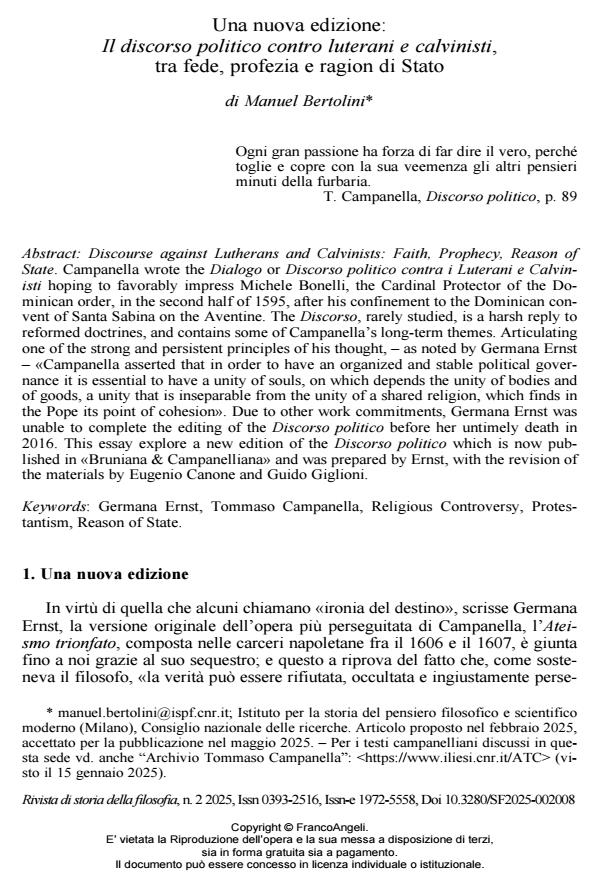Discourse against Lutherans and Calvinists: Faith, Prophecy, Reason of State.
Journal title RIVISTA DI STORIA DELLA FILOSOFIA
Author/s Manuel Bertolini
Publishing Year 2025 Issue 2025/2
Language Italian Pages 27 P. 310-336 File size 217 KB
DOI 10.3280/SF2025-002008
DOI is like a bar code for intellectual property: to have more infomation
click here
Below, you can see the article first page
If you want to buy this article in PDF format, you can do it, following the instructions to buy download credits

FrancoAngeli is member of Publishers International Linking Association, Inc (PILA), a not-for-profit association which run the CrossRef service enabling links to and from online scholarly content.
Campanella wrote the Dialogo or Discorso politico contra i Luterani e Calvin- isti hoping to favorably impress Michele Bonelli, the Cardinal Protector of the Do- minican order, in the second half of 1595, after his confinement to the Dominican con- vent of Santa Sabina on the Aventine. The Discorso, rarely studied, is a harsh reply to reformed doctrines, and contains some of Campanella’s long-term themes. Articulating one of the strong and persistent principles of his thought, – as noted by Germana Ernst – «Campanella asserted that in order to have an organized and stable political gover- nance it is essential to have a unity of souls, on which depends the unity of bodies and of goods, a unity that is inseparable from the unity of a shared religion, which finds in the Pope its point of cohesion». Due to other work commitments, Germana Ernst was unable to complete the editing of the Discorso politico before her untimely death in 2016. This essay explore a new edition of the Discorso politico which is now pub- lished in «Bruniana & Campanelliana» and was prepared by Ernst, with the revision of the materials by Eugenio Canone and Guido Giglioni.
Keywords: Germana Ernst, Tommaso Campanella, Religious Controversy, Protes- tantism, Reason of State.
Manuel Bertolini, Una nuova edizione: Il discorso politico contro luterani e calvinisti, tra fede, profezia e ragion di Stato in "RIVISTA DI STORIA DELLA FILOSOFIA" 2/2025, pp 310-336, DOI: 10.3280/SF2025-002008